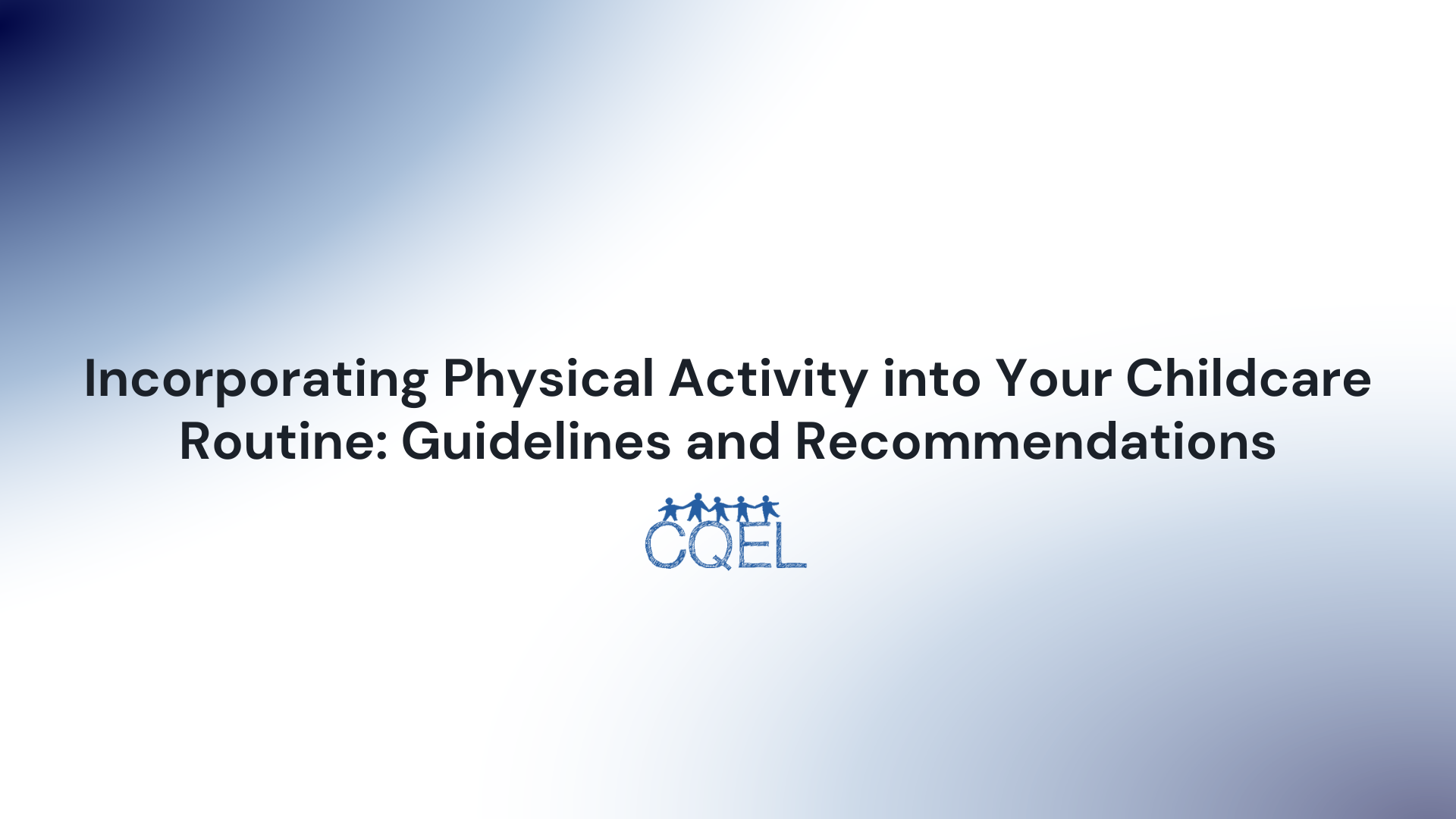Incorporating Physical Activity into Your Childcare Routine: Guidelines and Recommendations
Incorporating physical activity into your childcare routine can sometimes be challenging due to time constraints, space limitations, and other factors. However, with some planning and creativity, it is possible to integrate physical activity into your daily routine in a fun and engaging way.

Physical activity is an essential component of a child's development. It helps to improve motor skills, strengthen bones and muscles, and support mental health. It also helps children to develop social skills and manage their emotions. The American Heart Association recommends that children aged 3-5 should be physically active throughout the day to enhance growth and development. For children aged 6 and above, at least one hour of moderate-to-vigorous physical activity each day is recommended. Incorporating physical activity into your childcare routine can sometimes be challenging due to time constraints, space limitations, and other factors. However, with some planning and creativity, it is possible to integrate physical activity into your daily routine in a fun and engaging way.
- Start with a Plan: Begin by creating a daily schedule that includes time for physical activity. Make sure to allocate time for both structured activities (e.g., games, sports) and unstructured activities (e.g., free play, recess). The Centers for Disease Control and Prevention (CDC) recommends that preschool-aged children should be active throughout the day, while school-aged children should get at least 60 minutes of physical activity each day.
- Make it Fun: Children are more likely to participate in physical activities if they are enjoying themselves. Try to incorporate games and activities that the children enjoy and that are appropriate for their age and developmental level. For example, toddlers may enjoy playing with balls or riding tricycles, while older children may enjoy games like tag or soccer.
- Use Available Space: Make the most of your available space. If you have access to an outdoor area, utilize it as much as possible. If space is limited, there are many activities that can be done indoors, such as dancing, yoga, or obstacle courses.
- Be Flexible: Be prepared to adjust your plans based on the children's needs and interests. If the children are not enjoying an activity, switch to something else. Also, be mindful of the weather and have a backup plan for indoor activities if necessary.
- Incorporate Physical Activity into Learning: Physical activity can also be incorporated into learning activities. For example, children can practice counting while doing jumping jacks or learn about shapes while playing a game of catch.
- Lead by Example: Children are more likely to be active if they see adults being active as well. Make sure to participate in the activities with the children and encourage them to stay active.
- Safety First: Safety should always be a top priority. Make sure the area is free of hazards, and supervise the children at all times. Also, ensure that the activities are appropriate for the children's age and developmental level.
It is essential for early educators to have access to various resources to support integrating physical activity into their childcare routine. There are several organizations and websites that offer valuable resources, including lesson plans, activity ideas, and tips for creating a physically active environment. For example, the National Association for Sport and Physical Education (NASPE) provides guidelines and resources for physical activity in early childhood. Similarly, Head Start offers young children physical development and health resources. Additionally, websites such as PBS Kids and KidsHealth offer a variety of games and activities that can be done both indoors and outdoors. Early educators can also consider attending workshops or online courses on physical activity and early childhood development. Organizations such as the American Heart Association offer professional development opportunities for early childhood educators. Lastly, don't forget to tap into your local community resources. Local parks and recreation departments often have resources and programs available for young children.
Remember to continuously seek out new resources and stay updated on best practices to ensure you are providing the best possible environment for physical activity in your childcare setting.By incorporating physical activity into your childcare routine, you can help to promote healthy development in children. Remember to make it fun, be flexible, and always prioritize safety.
